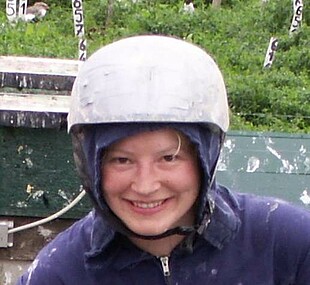Dr. Juliane Riechert
My research centres on ecological and physiological questions at the inter and intra-individual level during reproduction. I am especially interested in how different individuals cope with stressful events and what consequences for reproductive success arise from differences in breeding behaviour and decisions. Furthermore, I explore the physiological mechanisms that underlie these decisions and mediate breeding behaviour in birds. So far, my focus has been on two hormones, prolactin and corticosterone, which are known to be involved in regulating breeding behaviour. Moreover, I investigate to what extent prolactin and corticosterone values are useful indicators of individual quality in birds.
My study species is the common tern (Sterna hirundo), a small, long-lived and colonially breeding seabird with biparental care. The colony I am working on is located at the “Banter See” in Wilhelmshaven and has been extensively studied since 1984. From 1992 onwards, all fledglings have been marked with subcutaneously injected transponders, which allows a life-long identification of each individual on resting places and nests within the colony (for details, also see the website of Dr. Sandra Bouwhuis). Using these techniques, we are able to measure various life-history traits, such as arrival or laying date and reproductive success, and analyse inter- as well as intra-individual variation in these traits within and between years.
Blood samples of breeding common terns are gained by blood-sucking bugs (Dipetalogaster maxima) in hollow eggs, which are put in the nests of focal birds. They suck about 0.5 ml blood, which is frozen immediately until analysis in the lab (via RIA). This is a minimally invasive and very successful method that is especially useful for analysing baseline levels of hormones.
By combining hormone levels and life-history data, I investigated the effect of body condition or reproductive investment on hormone levels: While fasting on the nest, terns lose weight accompanied by increasing corticosterone and decreasing prolactin (Riechert et al. 2014a), which could ultimately lead to nest abandonment. The prolactin level was also lower during incubation of a second clutch compared to the first one of the same bird (Riechert et al. 2013a), probably linked to weight loss due to high parental effort. As high prolactin was found to be linked with certain parameters of high quality in common terns (high breeding experience, increased reproductive success, renesting), I suggest increased prolactin to be useful to indicate high quality individuals.
Additionally, I focused my research on the expression of sex-specific parental care during reproduction and their underpinning in hormone levels. I found higher baseline corticosterone levels in fathers after hatching of young compared to mothers. Slightly increased corticosterone could facilitate increased activity, supporting fathers in their role as feeder of chicks. In accordance with this theory, a slightly increased corticosterone level was found to be related to higher reproductive success (Riechert et al. 2014b). On the other hand, an increased prolactin value in mothers, but not fathers, was linked to increased hatching success, which could be explained by their higher incubation share. I am currently following up this work, by asking how sex-specific incubation duties might change under the presence of predators and how these parental breeding schedules are affected by breeding experience of birds. My future plans also include an investigation of hormone heritability in common terns, facilitated by the fact that we sampled many relatives and have detailed knowledge about the pedigree of marked terns in our population.


